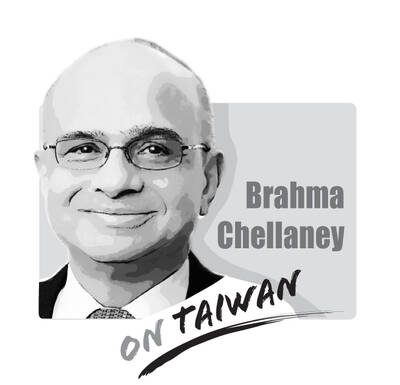Over the past few years, inexpensive data storage coupled with advancements in supercomputers and artificial intelligence (AI) analytics have allowed the exploitation of population data in ways that megalomaniac technocrats and totalitarian dictators could only have dreamed of just a decade or two ago.
US government advisers in March said that Chinese firm BGI Group was constructing a vast bank of genomic data that, combined with AI tools, would allow China to monopolize the global pharmaceutical industry, “build” genetically enhanced soldiers and — most concerning of all — engineer pathogens to empower ethnically targeted bioweapons.
Reuters on Wednesday published a special report on BGI Group’s gene harvesting that makes for chilling reading.
BGI Group’s prenatal test, branded NIFTY (Non-Invasive Fetal TrisomY) is one of the most popular in the world and has been used to harvest genetic data from millions of women in at least 52 countries, the report says. The company reportedly stores and reanalyzes leftover blood samples and genetic data from the tests — taken by more than 8 million women around the world — to detect abnormalities such as Down syndrome in fetuses.
A review of scientific papers and company statements by Reuters found that the tests capture genetic information about the mother, which is what appears to be of interest to the Chinese military.
The report says that BGI Group has collaborated with the Chinese People’s Liberation Army (PLA) on at least a dozen studies since 2010, including conducting research into population traits. One such study used a PLA military supercomputer to reanalyze gene data collected from NIFTY tests to isolate specific character traits in Tibetan and Uighur minorities.
The Reuters investigation found that genomic data collected by BGI Group from women outside of China have been stored in a gene database funded by the Chinese government.
While some of the studies could have benign medical uses — such as tracking the effect of hepatitis B on different ethnicities to develop enhanced antiviral treatments — the PLA’s involvement should be a red flag, especially given China’s openly stated doctrine of “civil-military fusion.”
The PLA could use the vast database to find genetic vulnerabilities in a population — perhaps an adversary nation. A particular susceptibility to disease could be identified and then targeted with a genetically tailored bioweapon. The collaboration of civilian and PLA scientists on “gain of function” coronavirus experiments at the Wuhan Institute of Virology is well-documented.
China is known to have initiated a biowarfare research program in the early 1950s. In 1984, Beijing signed the Biological Weapons Convention, a disarmament treaty prohibiting signatory nations from developing, acquiring or stockpiling biological and toxin weapons, but the US intelligence community regardless continues to be concerned about PLA research on bioweapons.
A senior US Department of State official, speaking anonymously to China analyst and author Bill Gertz last year, said that classified Chinese research on biological warfare includes engineered weapons designed to attack specific ethnic groups with pathogens.
“We are looking at potential biological experiments on ethnic minorities,” the source said.
BGI Group’s collaboration with the PLA could be the tip of the iceberg. Who knows if other Chinese companies are also harvesting gene data from around the world?
Taiwan and other nations must take the threat seriously and direct resources to discovering whatever they can about the capabilities and intent of what appears to be a covert Chinese bioweapons program — before it is too late.

Taiwan stands at the epicenter of a seismic shift that will determine the Indo-Pacific’s future security architecture. Whether deterrence prevails or collapses will reverberate far beyond the Taiwan Strait, fundamentally reshaping global power dynamics. The stakes could not be higher. Today, Taipei confronts an unprecedented convergence of threats from an increasingly muscular China that has intensified its multidimensional pressure campaign. Beijing’s strategy is comprehensive: military intimidation, diplomatic isolation, economic coercion, and sophisticated influence operations designed to fracture Taiwan’s democratic society from within. This challenge is magnified by Taiwan’s internal political divisions, which extend to fundamental questions about the island’s identity and future
The narrative surrounding Indian Prime Minister Narendra Modi’s attendance at last week’s Shanghai Cooperation Organization (SCO) summit — where he held hands with Russian President Vladimir Putin and chatted amiably with Chinese President Xi Jinping (習近平) — was widely framed as a signal of Modi distancing himself from the US and edging closer to regional autocrats. It was depicted as Modi reacting to the levying of high US tariffs, burying the hatchet over border disputes with China, and heralding less engagement with the Quadrilateral Security dialogue (Quad) composed of the US, India, Japan and Australia. With Modi in China for the
The Chinese Nationalist Party (KMT) has postponed its chairperson candidate registration for two weeks, and so far, nine people have announced their intention to run for chairperson, the most on record, with more expected to announce their campaign in the final days. On the evening of Aug. 23, shortly after seven KMT lawmakers survived recall votes, KMT Chairman Eric Chu (朱立倫) announced he would step down and urged Taichung Mayor Lu Shiow-yen (盧秀燕) to step in and lead the party back to power. Lu immediately ruled herself out the following day, leaving the subject in question. In the days that followed, several
The Jamestown Foundation last week published an article exposing Beijing’s oil rigs and other potential dual-use platforms in waters near Pratas Island (Dongsha Island, 東沙島). China’s activities there resembled what they did in the East China Sea, inside the exclusive economic zones of Japan and South Korea, as well as with other South China Sea claimants. However, the most surprising element of the report was that the authors’ government contacts and Jamestown’s own evinced little awareness of China’s activities. That Beijing’s testing of Taiwanese (and its allies) situational awareness seemingly went unnoticed strongly suggests the need for more intelligence. Taiwan’s naval